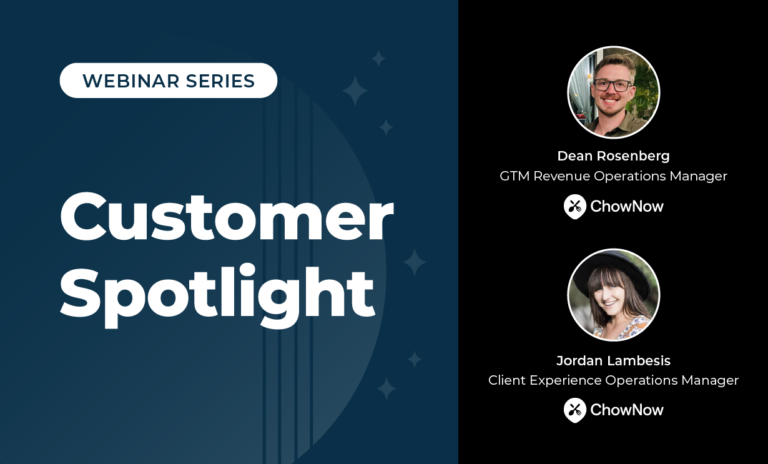When does a blessing of 15,000 to 20,000 new inbound leads per week become a curse? Perhaps when it overwhelms a go-to-market (GTM) motion reliant on time-consuming, inefficient manual processes.
When Ryann Morrow joined Cybrary, a cybersecurity and IT workforce development platform, in 2019, she inherited an outsourced, off-shore Sales Development Representative (SDR) team heavily steeped in outbound phone calls, a growing backlog of leads and … not much else other than a directive to push Cybrary to capture its in-market opportunities and drive growth.
Recently, Morrow visited with LeanData’s Jay Vira, a senior solutions consultant, to share her story of scalable growth in the webinar, “An Interview with Cybrary: Scaling an Inbound Sales Development Process with LeanData.” Below, you’ll find a brief review of their conversation.

Learning before growing
Before establishing goals, it’s important to get a handle on the key performance indicators that lead into goals. Once you understand where you’re at, you’re better able to establish goals around where you want to be, as well as strategies and action plans to get there.
When Morrow first joined Cybrary, she moved all GTM operations in-house, and one of her first subsequent tasks was to determine the capacity and capabilities of her team, collecting data around call metrics – dials and talk time. It provided her an understanding of what prospective customers wanted and how her team was following up. With data from her assessment, she was able to formulate departmental goals.
Developing strategies to reach goals
Goals in place, Morrow then set out to reach them. However, the selling and marketing processes Cybrary had were manual processes, with her position as the bottleneck, and the processes limited the team’s ability to chip away at the backlog of leads while, at the same time, following up in a timely manner with the influx of new inbound leads.
Morrow juggled strategic accountabilities with her tactical responsibilities, so when she could concentrate on leads, she would forward them, in bulk, to her SDR team. She’d try to qualify leads, de-prioritizing bad personas or leads with insufficient information, but most often, she found herself just ‘shooting leads over to the team.’ For her SDR team, it was a constant cycle of ‘hurry up and wait.’
It was apparent that the wins the team were producing were resulting in a ‘race to the bottom,’ the setting of some demos, but nothing repeatable and scalable for real growth. To scale, she needed automated processes.
Using automation to create swim lanes and “air traffic control”
Looking for automated solutions – like LeanData, for instance – opened Morrow’s eyes to the downstream challenges she had been unaware of due to her focus on the very top part of the company’s manual processes. It gave her a better understanding of the entire flow, and the opportunities that presented themselves for continuous improvement.
In addition to standardizing flows within the Cybrary instance of Salesforce, like initiating lead scoring to develop repeatable and scalable processes, Morrow also deployed LeanData Matching & Routing to create ‘swim lanes’ for her SDRs and ensure they followed up with leads in a productive manner, allowing her to take a more ‘air traffic controller’ type of role, overseeing her team’s entire flow and making iterative improvements as necessary.

Speed is the new currency of business
Marc Benioff, Chair & CEO of Salesforce, has often been quoted as saying, “Speed is the new currency of business,” and it’s a mantra that Morrow has interjected into her team’s daily tasks. Her team’s first operational imperative: improve speed-to-lead to build a healthy pipeline and achieve revenue more quickly!
In addition to using LeanData’s lead Routing to better define the previously established ‘swim lanes’ and increase speed-to-lead, the fuzzy matching algorithm in LeanData’s Matching solution mapped leads to accounts, providing the empowerment engine for Cybrary’s new ‘land and expand’ strategies. With leads matched to broader accounts, representatives were then able to engage them in richer, more relevant conversations, and address their needs in manners that had already proved successful at the account level.
Return on Investment
With new automation tools in place and GTM processes cleaned up, Cybrary realized a 133% increase in revenue pipeline in its first full month of deployment, increasing speed-to-lead, driving product demonstrations, and routing leads effectively to other functional areas, like CSMs for existing customers. Additionally, Morrow had time ‘given back to her’ to tend to more strategic matters and increase her capacity to coach, manage and mentor.
With Morrow’s and Cybrary’s success, she has advice for others who may find themselves in situations similar to where she started: “Don’t wait to do something, because the longer you wait, the bigger the mess is going to be. It’s okay to kind of be in that paralytic phase for a moment. But I promise you, the second you take action to start to untangle the mess that is sometimes pre-sales, the better you’re going to feel. It’s hard work, but the rewards are much higher.”
For the complete story of Cybrary’s reinvention of its Inbound GTM processes, watch the full webinar on demand, “An Interview with Cybrary: Scaling an Inbound Sales Development Process with LeanData.”







